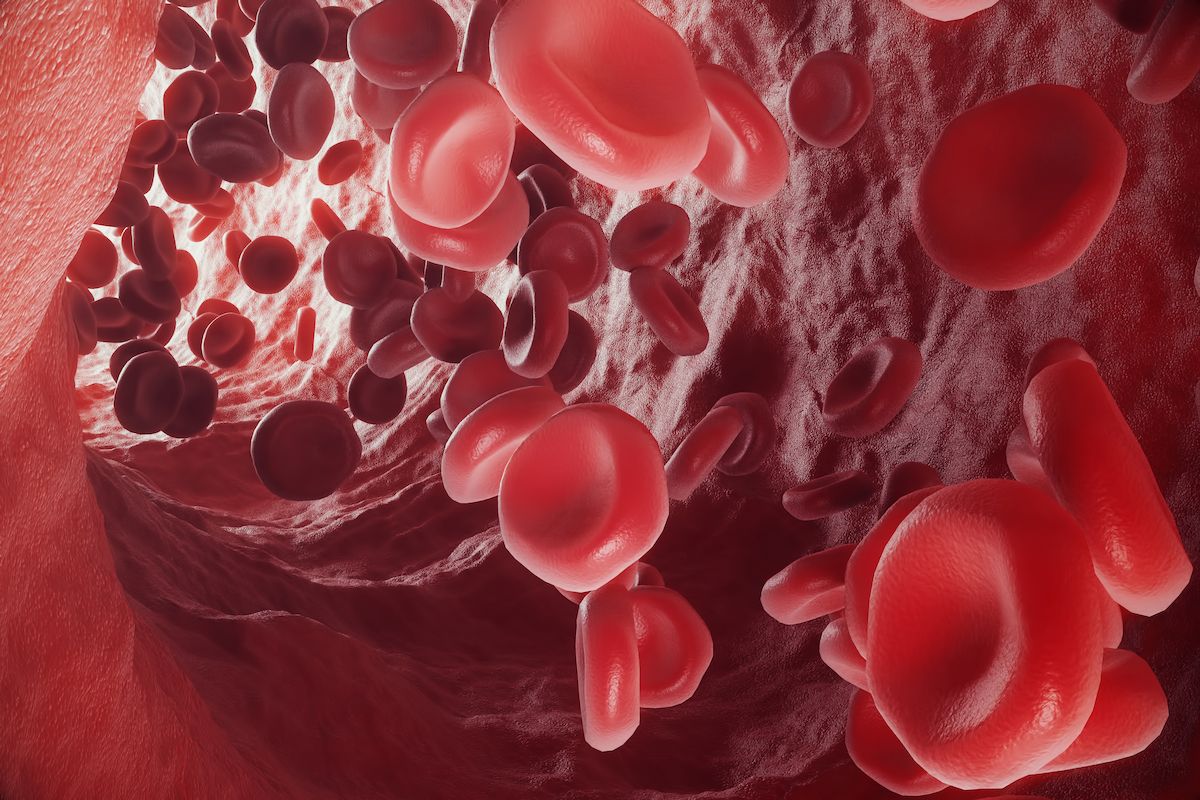Axi-Cel Yields Long-Lasting Responses in High-Risk Large B-cell Lymphoma
Updated safety and subgroup analyses appear consistent with previously reported results from the phase 2 ZUMA-12 study of axicabtagene ciloleucel for patients with high-risk large B-cell lymphoma.
The phase 2 trial included patients with high-risk LBCL with MYC, and BCL2 and/or BCL6 translocations, or LBCL with an international prognostic index score of 3 or more before enrollment.

Durable responses were observed when axicabtagene ciloleucel (axi-cel; Yescarta) was used as a first-line therapy for patients with high-risk large B-cell lymphoma (LBCL), according to results from the phase 2 ZUMA-12 trial (NCT03761056), which were presented at the 2023 American Society of Hematology (ASH) Annual Meeting and Exposition.1
The overall complete response (CR) rate—the study’s primary end point—among patients treated with axi-cel was 86% (95% CI, 71%-95%), and the partial response (PR) was 5%, translating to an objective response rate of 92%. A total of 5% of patients had stable disease and 3% had progressive disease. It was noted that the key secondary end points of median duration of response (DOR), event-free survival (EFS), progression-free survival (PFS), and overall survival (OS) was not reached.
“Axi-cel may benefit patients exposed to fewer prior therapies and those with high-risk LBCL, a population with high unmet need and poor outcomes after standard first-line chemoimmunotherapy,” lead author Julio Chavez, MD, MS, associate member in the Lymphoma Section of the Department of Malignant Hematology at Moffitt Cancer Center, said during the presentation.
The phase 2 trial included patients with high-risk LBCL with MYC, and BCL2 and/or BCL6 translocations, or LBCL with an international prognostic index (IPI) score of 3 or more before enrollment. Patients also needed to have positive interim PET scans after 2 cycles of treatment with an anti-CD20 monoclonal antibody plus an anthracycline regimen. Additionally, they needed to be older than 18 years with an ECOG performance status of 0 or 1.
After enrollment, patients went on to undergo leukapheresis followed by an optional nonchemotherapy bridging therapy, lymphodepletion, and axi-cel infusion. Fludarabine was given at a dose of 30 mg/m2 and cyclophosphamide was given at 500 mg/m2 on days –5, –4, and –3, with both treatments given intravenously. Axi-cell was given as a single intravenous infusion of 2 x 106 CAR T cells/kg on day 0.
The median follow-up was 40.9 months (range, 29.5-50.2) with a data cutoff of May 3, 2023, assessing 40 patients. A total of 37 patients were efficacy evaluable as described by Lugano classification. Those in this population were given axi-cel at least 1 x 106 anti-CD19 CAR T cells/kg with centrally confirmed disease type of double-hit or triple-hit lymphoma or LBCL with an IPI score of more than 3. The safety analysis consisted of the 40 patients initially enrolled.
At the time of data cutoff, 73% of patients continued to have responses. A conversion from a PR to a CR occurred in 22% of patients and a stable disease to a CR in 3%.
The 3-year DOR rate was 81.8% (95% CI, 63.9%-91.4%), and for patients who achieved a CR as a best response, the 3-year DOR was 84.4% (95% CI, 66.5%-93.2%). The 3-year EFS was 73.0% (95% CI, 55.6%-84.4%), for those who had a CR as a best response the rate was 84.4% (95% CI, 66.5%-93.2%).
A multivariate analysis for EFS rates found similar results and little difference among key LBCL subgroups.
For patients who achieved a CR as the best response, the 3-year PFS was 84.4% (95% CI, 66.5%-93.2%) and the 3-year OS rate was 90.6% (95% CI, 73.6%-96.9%).
A total of 13% of patients had any treatment-emergent adverse effects (TEAEs) following the primary analysis, with 8% having grade 3 or higher toxicities. Serious TEAEs occurred in 8% of patients. Any infection or infestation was reported in 10% of patients with 5% having grade 3 or higher, 8% having COVID-19–related infections, 3% having device-related infection, and 3% having sinusitis.
A total of 8 patients died on the trial, with 5 having progressive disease, 1 from COVID-19, 1 from esophageal adenocarcinoma, and 1 from septic shock. There were no reports of new cytokine release syndrome or neurologic events at any grade since the previous data cutoff. Since the primary analysis, 1 patient had prolonged cytopenia and this was resolved by data cutoff.2
For patients with an ongoing CR or PR at the 30-month cutoff data (n = 27), the median post-infusion CAR T cell expansion by peak was 35.7 cells/μL and the area under the curve (AUC) on days 0 to 28 was and 368.0 cells/μL x days. For patients who relapsed (n = 6) compared with non-responders (n = 3) the median post-infusion CAR T cell expansion by peak was 45.1 cells/μL and 413.4 cells/μL x days, respectively.
References
- Chavez, JC, Dickinson M, Munoz J, et al. 3-year analysis of ZUMA-12: a phase 2 study of axicabtagene ciloleucel as first-line therapy in patients with high-risk large B-cell lymphoma. Blood. 2023;142(suppl 1):894. doi:10.1182/blood-2023-174510
- Neelapu SS, Dickinson M, Munoz J, et al. Axicabtagene ciloleucel as first-line therapy in high-risk large B-cell lymphoma: the phase 2 ZUMA-12 trial. Nat Med. 2022;28(4):735-742. doi:10.1038/s41591-022-01731-4
Newsletter
Stay up to date on recent advances in the multidisciplinary approach to cancer.
Highlighting Insights From the Marginal Zone Lymphoma Workshop
Clinicians outline the significance of the MZL Workshop, where a gathering of international experts in the field discussed updates in the disease state.